QuestionKaren,
I am getting ready to set up a 55 gallon tank probably in a month and a half or so. I have basically no experience with fish tanks (the tank was previously used for a snake which got a little too big so I gave it back to the pet store). All I have at this moment is the tank. I'm hoping you can give me some advice that will help me get this thing set up, running well, and being nice to look at. Can you please give me some ideas for equipment to use for the tank, as well as good fish combinations...I'd like to have some variety? I want to do this right, but I am also on a somewhat limited budget. Also, I may not always have a ton of time for maintenance. I know that fish tanks can sometimes be a ton of work. I am willing to put time in, but may not have as much as some. Please let me know what you recommend. I appreciate all of your help!
AnswerHello Nathan and welcome to the wonderful world of aquariums! :-)
Before you get started you need to do much research on the basic aspects of fish keeping. I highly recommend that you try to avoid internet researching because as a beginner, you can get so many opinions and conflicting advice that aquarium keeping can seem confusing and difficult. Stick to good books as much as you can. Book info is often more reliable than websites. (Anyone can setup a website) but the stuff that goes to print and published is often more reliable and accurate. I highly recommend you buy "the simple guide to freshwater aquariums" the author provides sound and excellent advice for this time period of fishkeeping. He is true to the facts and discusses aquarium keeping quite simply.
To start an aquarium, you will need to have all the equiptment which is essential--
*Your tank and Stand is of course essential
*Secure glass top cover and lighting fixture hood is needed..stick to florescent lights only please.
* Power filter- brands such as Regent, Cascade, Penguin, or Emperor are all excellent brands of Hang-on-the-back type power filters. This type of filter is the best kind to get for your first aquarium
*Heater and Thermometer- an aquarium heate for your tank size is neccessary to provide tropical fish with the proper temperature to be healthy. An excellent brand of heaters which I use is Visa-therm.
*Gravel- If you don't plan to make your aquarium planted, normal aquariums can get by with an inch or less of gravel. There is no set rule to how much you should have unless the tank is planted. As a rough estimate, 4-5 10 pound bags of gravel should be adequate. But it depends on your grain size. Finer gravels you will need to use more to get a decent layer for aquascaping. Don't put in several inches please, it will make keeping the aquarium clean much more difficult. I prefer a natural color to the gravel but you may choose green or blue as you wish. Just stick to subdued colors and don't get anything bright or florescent--(for the fishes sake)
*Decorations are simply a matter of choice, but stick to aquarium made ones only. Fish really won't mind a bubbling treasure chest, or a sunken ship in their tank. As long as it provides hiding cover it doesn't really matter. But I personally think the best aquariums are those naturally decorated with driftwood, petrified wood, rocks, pebbles, and plants.
* Water Dechlorinater/conditioner is essential! You must have it to remove harmful chlorine/chloramines in your tap water which is toxic to fish but of course safe to us.
* Aquarium test kits for ammonia, nitrite and pH is vital. Monitering water quality especially during the break-in period is absolutely neccessary for the well-being of your fish.
* Bucket and Siphon hose for aquarium cleaning is neccessary for maintainance routines. A medium to large size gravel vacummn is great.
* Algae scraper- for those times of algae growths
* Net- this is a neccesity for catching fish!! Larger sizes are better for netting.
* Last but not least there are two important products to get to have on hand for emergencies.
-Salt
-Ich medication. Only use aquarium salt. This is for times when your fish are severely stressed or are sick. Ich medication is also great to have on hand. The common illness ICH or white spot disease is very common in new aquariums and new arrivals. Not all fish catch it but for the beginner, it's better to be safe than sorry.
~So this is basically what you need for a basic setup. Getting everything up and running is another thing you must master. After you have your aquarium situated, wash your gravel in plain tap water and pour it into your aquarium carefully. It is very good to slope the gravel where it is higher in the back and lower in the front.
Place your plants and decorations in your desired place. Try to arrange little hiding places for timid fish you may keep in the future. All fish seem to like a lot of cover in the form of plants in the back of the aquarium.
Next fill your aquarium with lukewarm water. If you want to get things going fast you can also drag a water hose into your house and fill it up carefully that way.
Use your water conditioner at the recommended dose for your aquarium. Wonderful water conditioners like AMQUEL and prime work great. But others like Stresscoat or Aquasafe are also just fine.
Now turn everything on and make sure everything is adjusted where it should be. Your heater should be around 76-80 F. Attach your thermometer (whether sticker type or normal stick ones) on your aquarium.
Let your aquarium run for at least 3-4 days before adding any fish. This insures all the equiptment is running smoothly and gives you a chance to make any adjustments to create the best conditions for your fish.
Now you need to decide what you wish to keep in there. This is the essential time to do lots and lots of research, decide what types of fish you want to keep and if they are compatible in their temperaments and preferred water conditions. You will want to start with a hardy species like danios, platies, Swordtails or black skirt tetras for cycling. Cycling or establishing your aquarium means allowing time for certain beneficial bacteria to grow and develop into a colony. These good bacteria are not visible to the human eye but begin to grow once they have a food source to thrive on--ammonia. Ammonia is produced by a fishes respiration as well as waste production. Cycling means to grow and establish a large enough colony of these beneficial critters to have a constant healthy aquarium enviroment. To get ammonia you must add a few hardy fish. Danios do best in a school so 6-8 of most of the common species is fine in your aquarium. Danios like Zebras, Giants, and leopards are easy keepers and have good personalities. Once you have added your cycling fish, you should not add any more fish than just them. Now you must moniter your ammonia levels every day and if it is ever above safe bounds, do a 30-50% water change with your siphon. Always make the replacement water equal or just a tiny bit higher in temperature than that of your aquarium. And always dechlorinate it.
Everyday you will want to test your water for ammonia and nitrite--by the way nitrite is the end product of the ammonia eating bacteria. Nitrite is later converted into nitrate by more bacteria. Both ammonia and nitrite are very toxic to fish but nitrAte is relatively harmless and is the end product of the whole cycle. If ammonia or nitrite levels are above safe bounds, always do a 30-50% water change.
Your ammonia will spike for awhile and during that time you must dilute it down for the fishes sake with water changes. Always feed LIGHTLY. Next your ammonia AND nitrite will increase. And with time ammonia will begin to decrease and nitrie remain quite high... Once there is no ammonia, high nitrite, and begining to show levels of nitrate you know you're almost there!! When your ammona and nitrite levels have dropped to zero and nitrate risen your aquarium has cycled.
You may now add your other fish! Do it slowly though. No more than 4-6 fish at a time please. You'll want to do everything slow and with lots of patience to be successful. Acclimate any new fish carefully. With all fish any rapid changes in water quality or temperature must be taken slowly or avoided at all costs. Fish are easily stressed. Float your bag in the aquarium water for at least 20 minutes or better yet set the whole bag-open into a clean (rinsed VERY WELL) 1 gal pitcher. Now simply add half a cupful aquarium water every 5 minutes or so. Do this until your 1 gallon pitcher is filled, then gently net the little fish out and into his new aquarium. Don't pour in the store water. This is much better for the fish to be acclimated by both water temperature and water quality slowly than just by floating them and netting them into totally new aquarium water.
Well, before this becomes a mini novel I must wish you the best with your aquarium! This is a very cool hobby and I hope you enjoy it. Remember to always do research and be patient.
I have given you the very basics of aquarium keeping. If you have anymore questions please email me. I hope at least half of this has made sense!
Oh yes, and remember to do frequent water changes!!! Fish thrive on clean water!!! At least twice a week once things get established--more often when they're not.
Fishkeeping isn't hard or difficutl once you get the hang of things and your aquarium is established. It really ins'nt all that expensive if you know what you're doing.
Happy fishkeeping!
Karen~
--------
Please look into the Simple guide to freshwater aquariums. it will provide a more in depth detail-- put simply All about freshwater aquariums! best wishes,

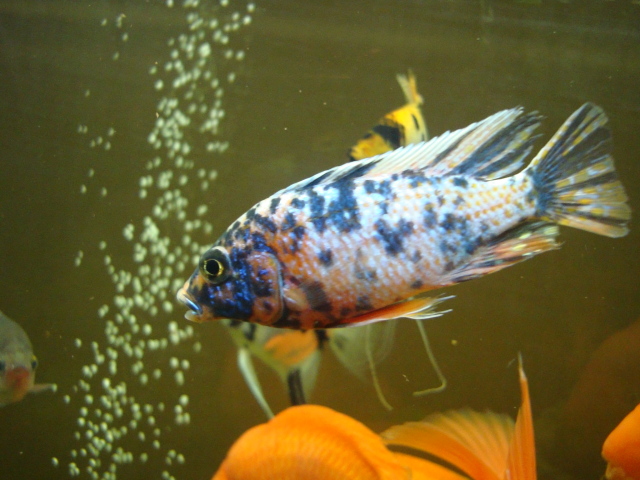 parrots and cichlids
Question
Cichlids
Hi,
Please can you tell which cichlid
parrots and cichlids
Question
Cichlids
Hi,
Please can you tell which cichlid
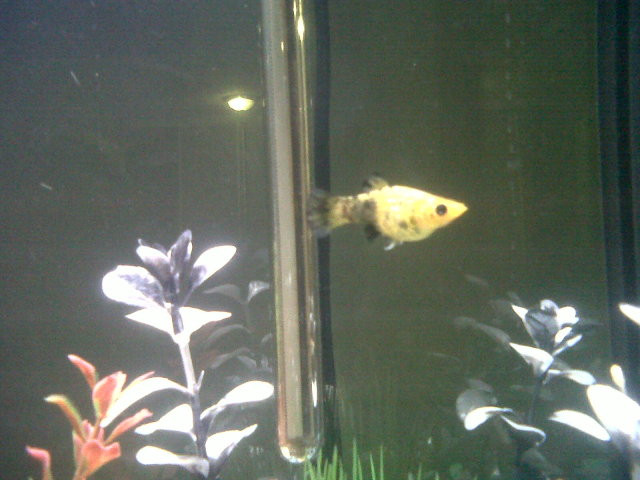 Birth of Molly Fish Babies????
Question
Pregnant Molly
Hi!! This is my fi
Birth of Molly Fish Babies????
Question
Pregnant Molly
Hi!! This is my fi
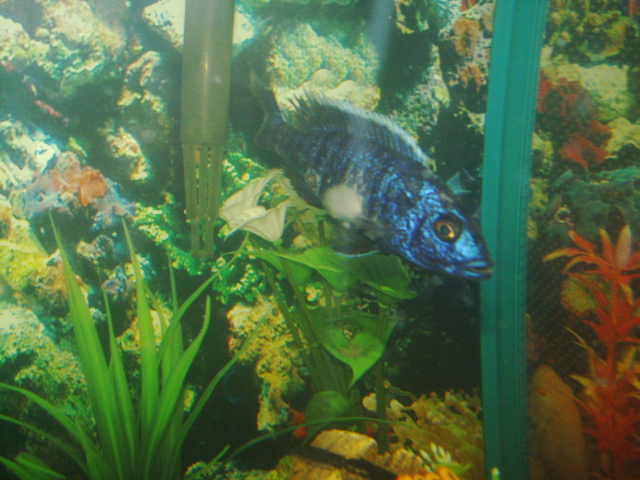 cichlid infection?
Question
Cichlid injured
one of my cichlid fish was bul
cichlid infection?
Question
Cichlid injured
one of my cichlid fish was bul
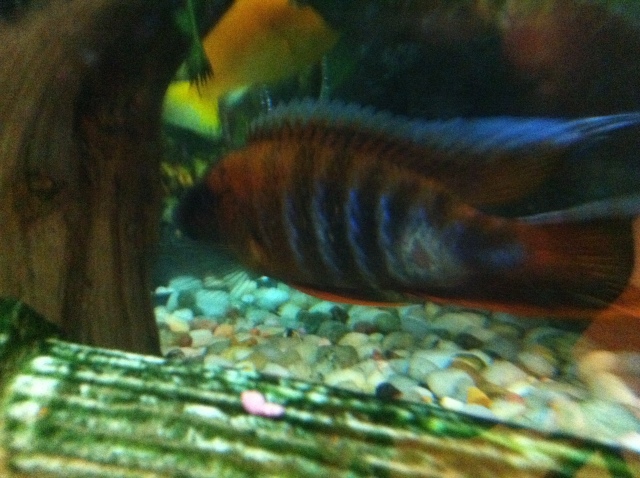 Sick cichlids! i dont want to lose them
QuestionQUESTION: Hello Renee, first off, thank you for
Sick cichlids! i dont want to lose them
QuestionQUESTION: Hello Renee, first off, thank you for
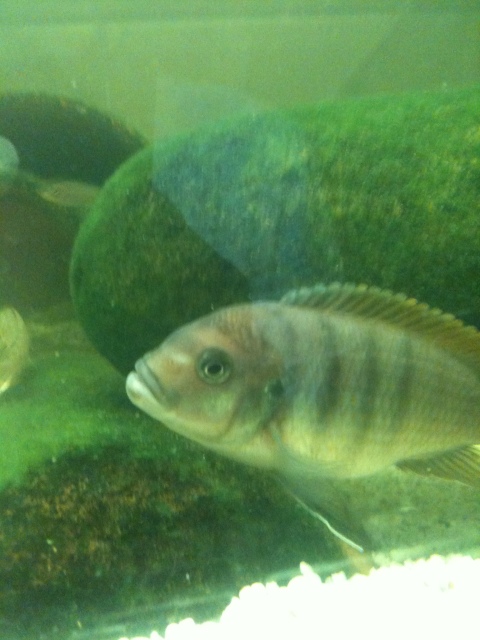 Fish I.D
Questionunknow fish
QUESTION: HI just moved into
Fish I.D
Questionunknow fish
QUESTION: HI just moved into